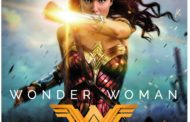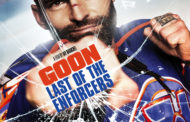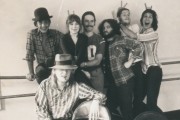 Next year the 1922 German Expressionist film Nosferatu will celebrate its ninetieth anniversary, and although it was not the first horror film it is by far the most important silent horror movie. While hundreds of silent films have been forgotten or, even worse, lost, Nosferatu remains among the most popular silent films ever made, with good reason: so much of the “language” of horror films was instituted by director F.W. Murnau in his “Symphony of Horror.”
Next year the 1922 German Expressionist film Nosferatu will celebrate its ninetieth anniversary, and although it was not the first horror film it is by far the most important silent horror movie. While hundreds of silent films have been forgotten or, even worse, lost, Nosferatu remains among the most popular silent films ever made, with good reason: so much of the “language” of horror films was instituted by director F.W. Murnau in his “Symphony of Horror.”
Nosferatu was also perhaps the first example of an unauthorized adaptation, as it is actually an adaptation of Bram Stoker’s famous vampire novel Dracula in all but name. Even today we see plagiarism suits leveled at films (the most recent being Harlan Ellison’s lawsuit over In Time), but Nosferatu is not looked on as any less of a classic film despite its unoriginal origins. Perhaps Stoker’s Dracula story is so ingrained in our culture that it doesn’t feel like it was created but rather always existed in the darkest corners of our lives, but I believe part of Nosferatu’s staying power simply has to do with how unique the film is visually. Because of that it feels so entirely different than what we expect from a Dracula film. Max Schreck, who played Count Orlock (Nosferatu), gave cinema one of its most enduring horrific images with his bat-like, creepy, gaunt monster. There have been hundreds of cinema vampires since, but none has ever looked as scary as Schreck’s Nosferatu. Decades later, a film based on the premise that Schreck was actually a vampire was released in 2000. Shadow of the Vampire, starring William DeFoe as Shreck and John Malkovich as Murnau, makes a wonderful companion piece for a Halloween double-feature.
Horror films, which rely on visuals and music, are probably our closest remaining link to silent film. After all, how many horror films have scared you simply with loud noises and shocking images? While Nosferatu was obviously shot without sound, its grotesque visuals have always been accompanied by moody dirge-like music no matter what edition of the movie you view. Still, even without sudden sound effects Nosferatu is scarier and far more shocking than the classic Universal Monsters films of the 1930s and the 1940s and the British Hammer Horror films of the  1950s, 1960s, and 1970s (both of which produced many Dracula films). It’s all in the film’s use of shadow – which Universal’s directors attempted to emulate in their horror films, but never as successfully – that makes all the images of Nosferatu so effective.
1950s, 1960s, and 1970s (both of which produced many Dracula films). It’s all in the film’s use of shadow – which Universal’s directors attempted to emulate in their horror films, but never as successfully – that makes all the images of Nosferatu so effective.
Is Nosferatu still important nearly ninety years after it premiered? Of course it is. Horror is truly the universal language of cinema – witness how many great horror films of the last two decades are either imports or remade from foreign films – and the silent Nosferatu truly established the universal visual style that continues to drive horror films even today. If you haven’t yet seen Nosferatu, it would be a great idea to sit back and view it on a dark evening this October.
Having been in the public domain for decades, a version of Nosferatu is available for free online streaming at the Internet Archive. However, the quality of this version is quite iffy, and does not have the original color tints. True fans would be wise to pick up either of the editions put out by Kino, which features the longest cut available with the original color tints.
Rating: 10/10 for historical worth alone, but you’ll still enjoy it despite the old fashioned techniques.
Watch it with the lights off.















Recent Comments